Your shopping cart is empty!
Menu
- +
-
Gate Automation+
-
Safety Solutions+
-
Access Control+
-
Garage Doors+
-
Intercoms+
- Home Automation +
-
Electrical+
-
CCTV+
- Networking +
-
Offers+
- News +
In June 2010 the tragic deaths of 2 young children in separate incidents less than 1 week apart only served to highlight the safety issues facing the UK gate automation industry. All automatic gate systems by LAW must be installed in compliance with the Machinery Directive MD2006/42/EC and supporting standards as highlighted by recent safety advisories from the Health & Safety Executive.
The HSE will be primarily responsible for any investigations carried out on gates where incidents have occurred and can prosecute installers or manufacturers accordingly. All Manufacturers and installers of automatic gate systems should take all necessary steps to meet compliance with the Machinery Directive to ensure their completed products are safe.
To aid manufacturers & installers in meeting the requirements for directive compliance, a harmonised product standard for gates was produced in 2003. The standard BS-EN13241-1:2003 provides an umbrella platform for creating a compliant gate product. The umbrella platform refers to supporting standards which contain information and requirements for various aspects of the gates performance & design. This guide is designed to provide installers with a summary of the key requirements of each supporting standard referred to by the product standard, and show how to apply appropriate solutions to meet each requirement.
For a full comprehensive guide to safety legislation and standards please visit www.dhfonline.org.uk
Defines areas of crushing, shearing & draw in on gates (see figures 1 & 2).
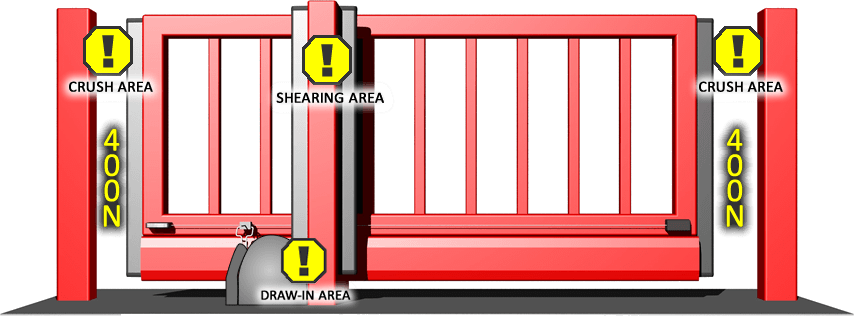

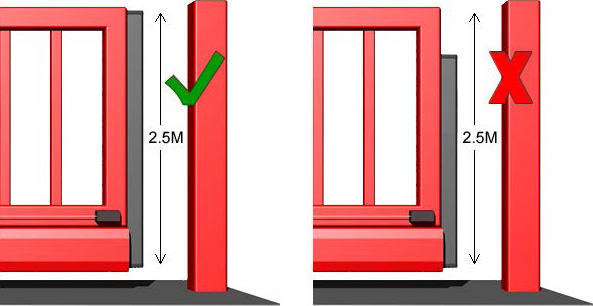
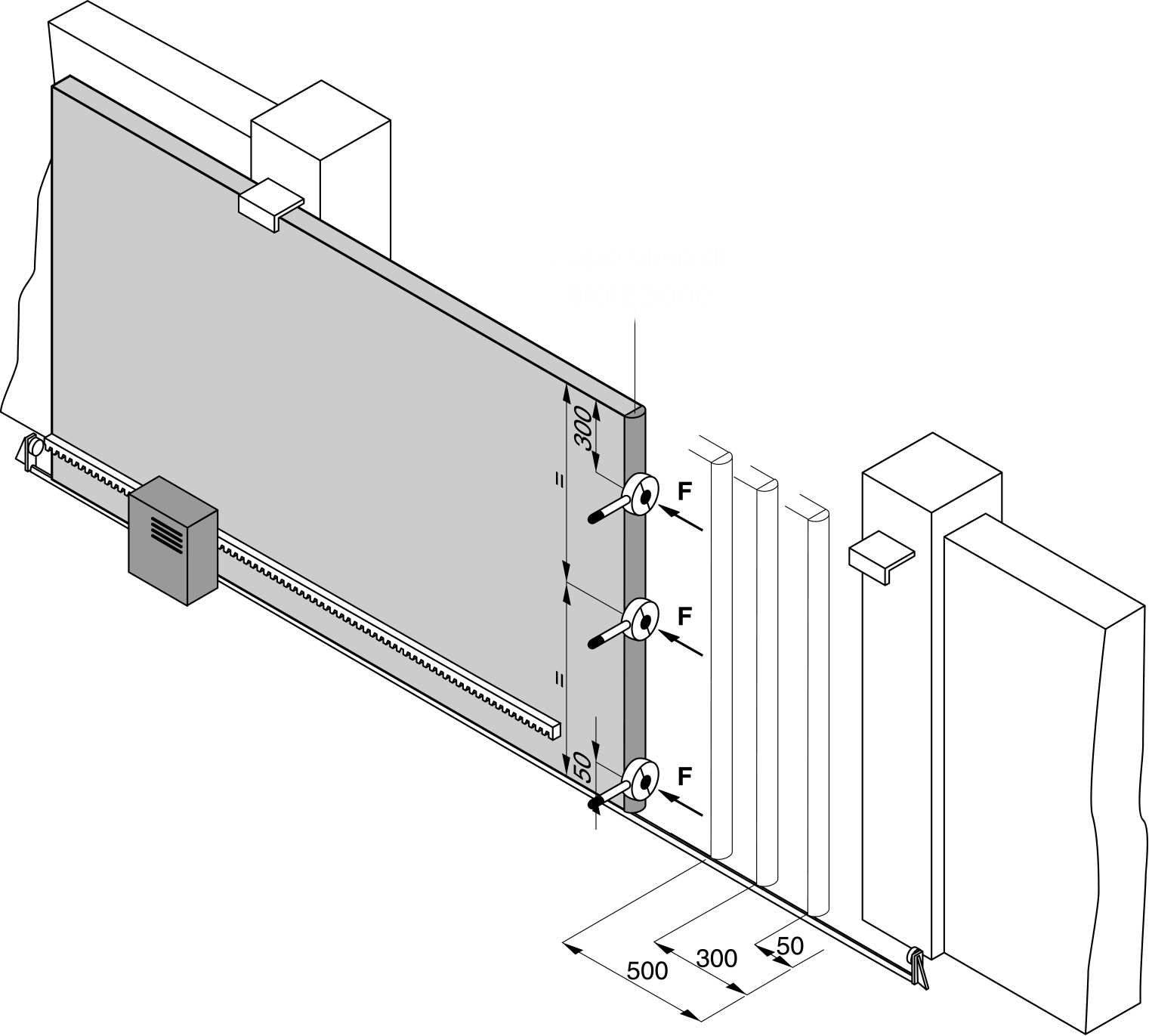
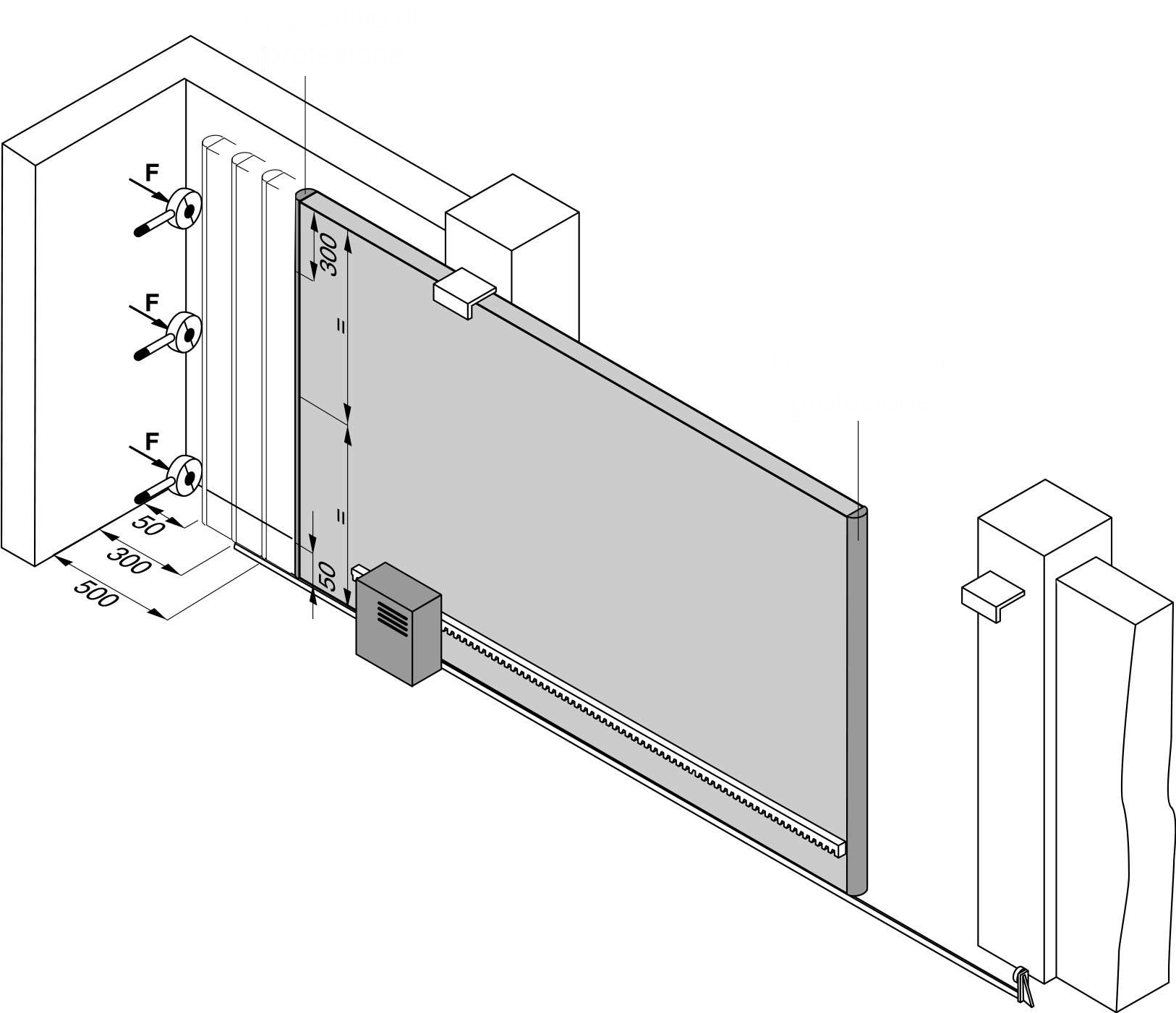
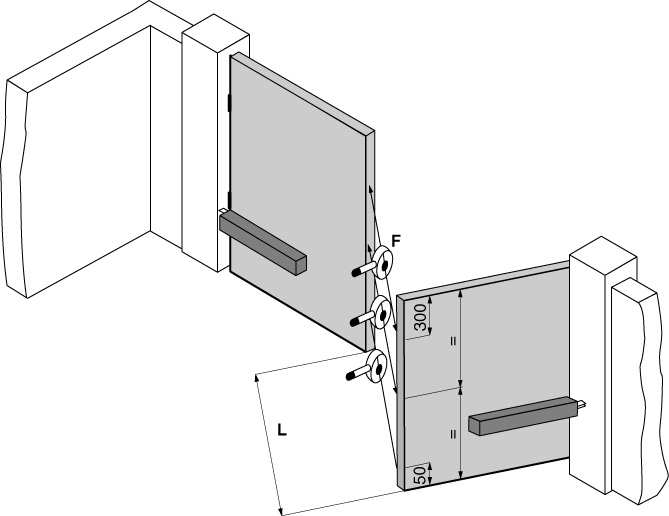
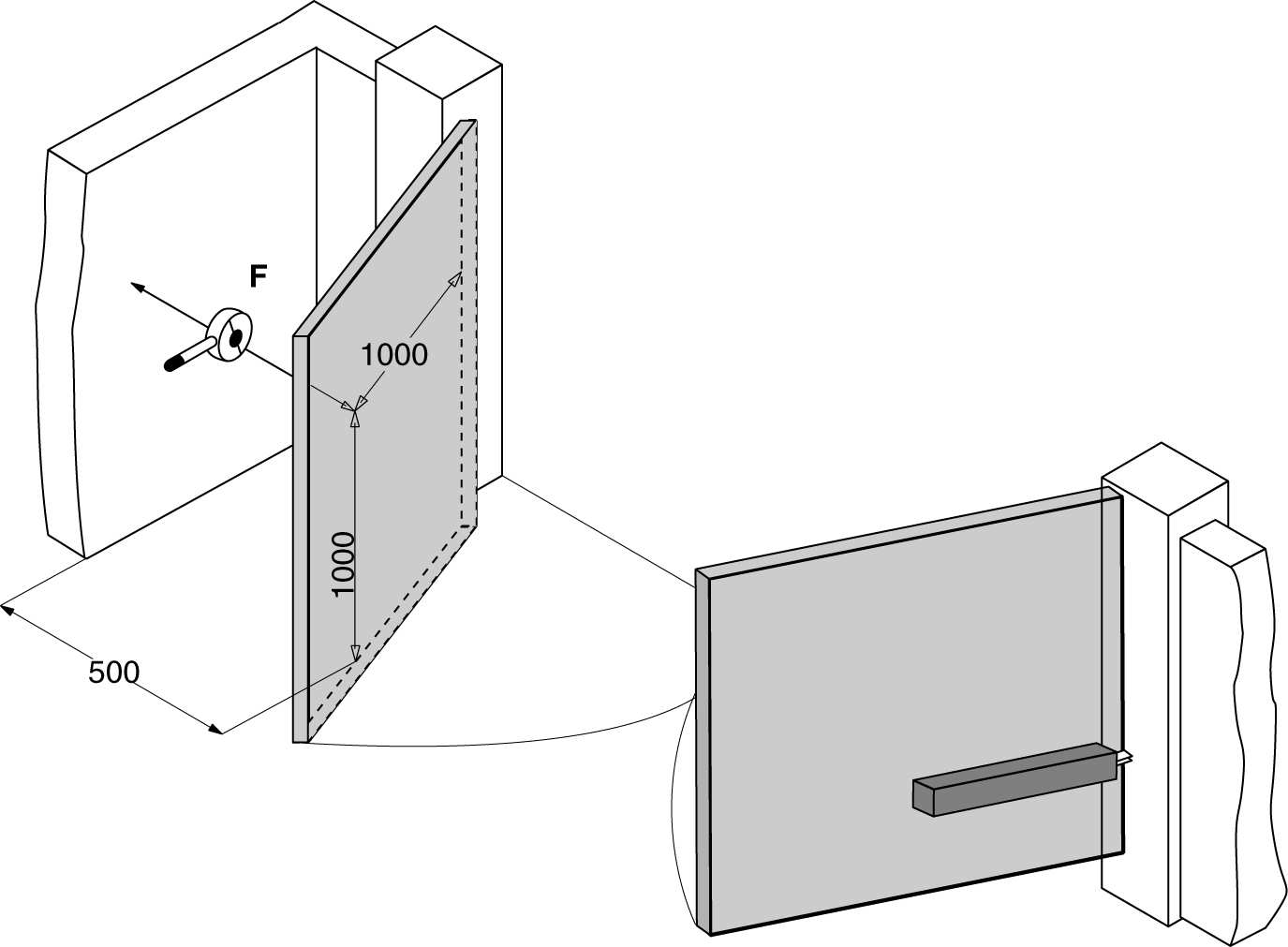
| Year | Legislation / Standard | Description | Dates |
| 1992 | Supply of Machinery (Safety) Regulations 1992 [EU Machinery Directive] | Required machinery to be safe and to carry the CE marking. Compliance was demonstrated principally by risk assessment since no harmonised standards existed at the time. | CE marking was required from 1st January 1995 |
| 2001 | EN 12453:2000 | Intended as a supporting standard to EN 13241-1, this nevertheless established the state of the art regarding safety of powered doors and gates. Available to support risk assessments. | Published as a British Standard in January 2001 |
| 2003 | EN 13241-1:2003 | Harmonised product standard under both the Machinery Directive and the Construction Products Directive. Powered door safety requirements based on EN 12453. Compliance with EN 13241-1 gives a presumption of conformity with the directives. | Available for CE marking from 1 May 2004 |
| 2008 | Supply of Machinery (Safety) Regulations 2008 [EU Machinery Directive revision] | Revision of 1992 regulations; compliance process largely unchanged. | Replaced 1992 regulations from December 2009 |
| 2010 | HSE Safety Notice FOD WSW 1-2010 | Guidance establishes a new “state of the art” for safety of powered gates. The guidance is not itself law, but is rather a new interpretation of the existing law, so could be challenged in court. However, this interpretation should be considered authoritative until modified or replaced. | Published 26th February 2010 |
| 2010 | HSE Safety Notice FOD 7-2010 | Updates and reinforces previous notice. | Published 2nd September 2010 |
| 2011 | HSE Safety Notice OPSTD 1-2011 | Release aimed at Landlords, Commercial owners or facilities managers of property’s with Powered Perimeter Gates. Sets out to inform of the duty of care responsibilities of the afore mentioned to ensure gates are maintained correctly or bought in-line | Published 21st January 2011 |